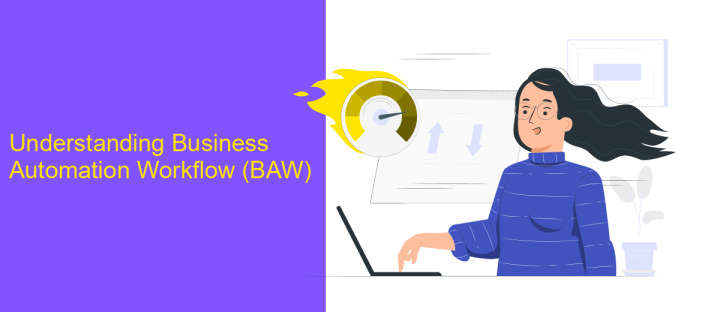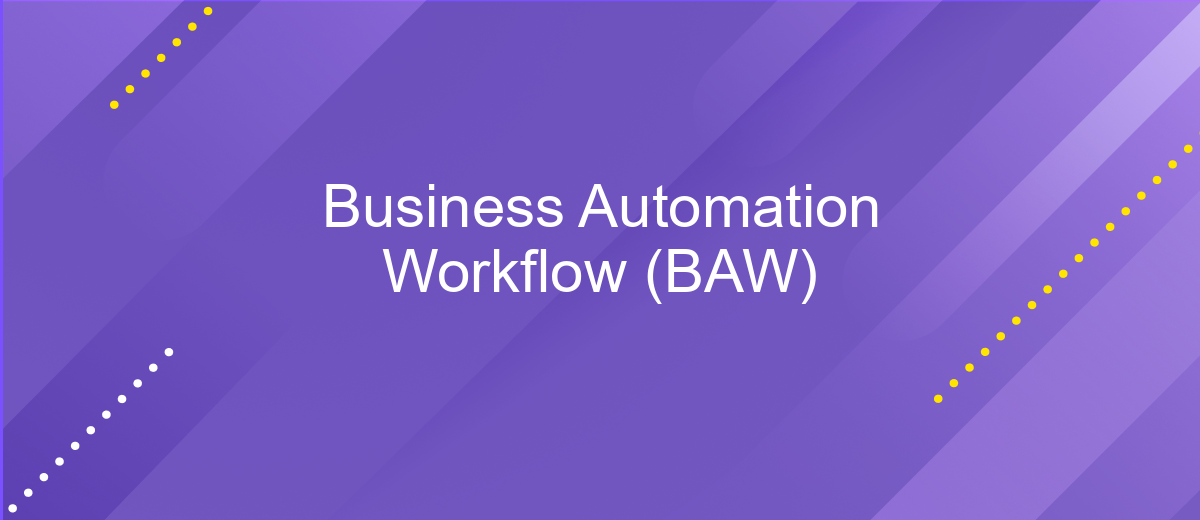Business Automation Workflow (BAW)
Business Automation Workflow (BAW) is a comprehensive solution that streamlines business processes by integrating workflow automation and case management capabilities. It enables organizations to enhance efficiency, reduce operational costs, and improve overall productivity. By leveraging BAW, businesses can automate repetitive tasks, ensure compliance, and deliver better customer experiences, ultimately driving growth and innovation in a competitive market.
Introduction
Business Automation Workflow (BAW) is a comprehensive solution that combines business process management (BPM) and case management capabilities to help organizations streamline their operations. By automating repetitive tasks and enabling efficient workflow management, BAW enhances productivity and ensures that business processes are executed consistently and accurately.
- Improved efficiency through automation
- Enhanced consistency in business processes
- Seamless integration with existing systems
- Flexibility to adapt to changing business needs
One of the key aspects of BAW is its ability to integrate with various services and tools to create a cohesive workflow environment. For instance, using integration platforms like ApiX-Drive, businesses can easily connect their existing applications and automate data transfers, thus reducing manual effort and minimizing errors. This integration capability not only simplifies the workflow but also allows for real-time data synchronization, ensuring that all stakeholders have access to the most up-to-date information.
Understanding Business Automation Workflow (BAW)

Business Automation Workflow (BAW) is an integrated platform that combines business process management (BPM) and case management capabilities. It enables organizations to streamline their operations by automating repetitive tasks and orchestrating complex workflows. By leveraging BAW, businesses can improve efficiency, reduce errors, and ensure compliance with regulatory requirements. The platform supports both structured processes and unstructured workflows, making it versatile for various business needs.
One of the key features of BAW is its ability to integrate with other systems and applications. Services like ApiX-Drive facilitate these integrations by providing a seamless connection between BAW and external software. ApiX-Drive allows users to automate data transfer, synchronize information, and trigger actions across different platforms without the need for manual intervention. This not only saves time but also enhances the overall effectiveness of the automated workflows. By utilizing such integration services, businesses can achieve a higher level of automation and operational excellence.
Benefits of Business Automation Workflow

Implementing Business Automation Workflow (BAW) can significantly enhance the efficiency and productivity of an organization. By automating repetitive tasks and streamlining processes, businesses can focus more on strategic activities and less on routine operations.
- Improved Efficiency: Automation reduces the need for manual intervention, thus speeding up processes and reducing errors.
- Cost Savings: By minimizing manual labor and optimizing resource usage, businesses can achieve substantial cost reductions.
- Enhanced Compliance: Automated workflows ensure that all steps are followed consistently, aiding in compliance with industry regulations.
- Better Collaboration: BAW tools facilitate seamless communication and coordination among team members, improving overall collaboration.
- Scalability: Automated systems can easily scale to accommodate business growth without significant additional costs.
Moreover, integrating BAW with services like ApiX-Drive can further enhance its capabilities. ApiX-Drive enables seamless integration between various applications, ensuring smooth data flow and connectivity. This not only simplifies the integration process but also helps in maintaining a cohesive and efficient workflow across different platforms.
Implementation of a BAW System

Implementing a Business Automation Workflow (BAW) system involves several critical steps to ensure seamless integration and functionality. Initially, it is essential to conduct a comprehensive analysis of existing business processes to identify areas that can benefit from automation. This analysis forms the foundation for designing a tailored BAW solution that meets specific organizational needs.
Once the analysis is complete, the next step is to select the appropriate tools and technologies to support the BAW system. This includes choosing a reliable platform that offers robust workflow management capabilities, as well as integration tools to connect various business applications and data sources. ApiX-Drive is an excellent option for facilitating these integrations, as it provides a user-friendly interface for connecting multiple services without the need for extensive coding.
- Conduct a thorough business process analysis
- Select suitable tools and technologies
- Design and develop the BAW system
- Test and refine the system
- Implement and monitor the BAW system
After designing and developing the BAW system, it is crucial to test it rigorously to identify and resolve any issues. Following successful testing, the system can be implemented across the organization. Continuous monitoring and refinement are necessary to ensure the BAW system remains effective and adapts to evolving business needs.
- Automate the work of an online store or landing
- Empower through integration
- Don't spend money on programmers and integrators
- Save time by automating routine tasks
Best Practices for BAW
Implementing Business Automation Workflow (BAW) effectively requires a clear understanding of your business processes. Begin by mapping out your workflows in detail to identify areas for automation. Focus on repetitive tasks that consume significant time and resources. Utilize a phased approach to implementation, starting with simpler processes before tackling more complex ones. This allows for gradual adaptation and minimizes disruption to daily operations. Regularly review and update your workflows to ensure they remain aligned with your business goals and evolving market conditions.
Integrating BAW with other systems is crucial for maximizing its benefits. Utilize integration platforms such as ApiX-Drive to streamline data flow between your various applications. ApiX-Drive offers user-friendly tools for connecting different services without the need for extensive coding knowledge. Ensure that your integrations are secure and comply with relevant data protection regulations. Additionally, provide thorough training for your team to ensure they are comfortable using the new automated processes and can troubleshoot any issues that arise. Regular feedback and continuous improvement are key to maintaining an efficient BAW system.
FAQ
What is Business Automation Workflow (BAW)?
How can BAW improve business processes?
What are the key components of BAW?
How can I integrate BAW with other systems?
Is BAW suitable for small businesses?
Do you want to achieve your goals in business, career and life faster and better? Do it with ApiX-Drive – a tool that will remove a significant part of the routine from workflows and free up additional time to achieve your goals. Test the capabilities of Apix-Drive for free – see for yourself the effectiveness of the tool.


